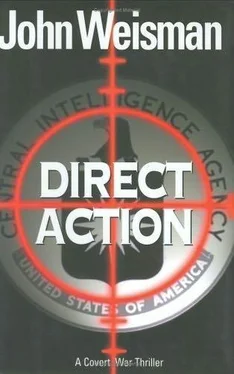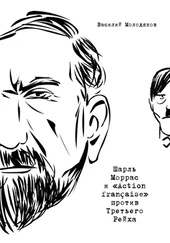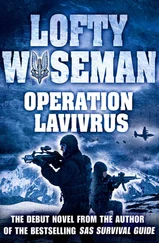He looked up. Tony was speaking. Tom blinked. Tried to play catch-up.
I saw the writing on the wall, Tony was saying. So did Charlie and Bronco. We got out. And I can tell you that right now-right at this very second-4627 is doing more human-based intelligence gathering worldwide than you and all of your colleagues at CTC. You come with us, and you’ll get the old feeling back, Tom. The same emotional highs and lows. Now, I’m not talking sinecure, Tom. This ain’t the Agency. We pay for results-not just for showing up. But we love our work. Oh God, do we ever love our work. Wyman sipped his wine. He put the big goblet down on the white tablecloth and shot the cuffs of his brightly striped London shirt to display the blue enamel and gold tooling of White House cuff links. Hunkering down and flying a desk ain’t why you joined CIA, Tom.
Tom drained his wine and waited as Wyman refilled his glass. Useless. That was the word that best described the most recent two and a half years of his career. He’d languished at Langley. Skirted depression. Gotten fat on the junk food in the cafeteria. Felt…unappreciated.
No more. The Rush was back. Tom cast a satisfied, surreptitious look at Reuven’s back as the Israeli pulled a pair of latex gloves out of the dispenser box and stuffed them into his coveralls. God, how incredible it is to be working with a world-class operator again. Tom pulled his own gloves from the dispenser. Then he picked up one of the six prepaid, disposable cell phones that sat on the nicked porcelain counter and dropped it into a pocket. Finally, he clipped the laminated Eurec photo identity card onto his collar. Without a word of warning, he flipped the condom in Reuven’s direction.
The Israeli whirled, snatching the foil-wrapped package out of the air. “Thank you, kind sir. This will be put to good use, believe me.”
The guy’s still got it. Tom made a dismissive gesture. “C’mon, lover boy, let’s get started.”
9:27A.M. Tom let Reuven off the motorcycle. After the Israeli slid a key into the heavy lock and pulled the narrow reinforced steel door open, Tom wrestled the big bike over the threshold into the warehouse, dropped the kickstand, and switched the motor off.
They’d driven north and east along boulevard Victor Hugo into the industrial zone that took up much of the southern portion of the suburb of St. Denis, which sits due north of the eighteenth arrondissement and the Porte de la Chapelle. But they didn’t follow a direct route. Instead, Tom flew between the cars and trucks, backtracking, making random turns, gunning the bike along the railroad tracks that ran through the zone, even occasionally heading the big BMW against traffic on one-way streets to discourage all but the hardiest of followers. So, unless DST was using its aerial assets-which was highly unlikely given the fact that Tom was a relatively low-priority target these days-they reached the 4627 stowage facility clean of surveillance.
The Israeli pulled a small flashlight out of his pocket and shined it on the interior wall until he found the light panel. He opened the box, reached up, and threw the switches that turned the big overhead lights on. It was a cavernous place. Tom could hear birds in the rafters. How they got in without setting off the intrusion devices, Tom had no idea. How they survived, Tom had no idea. But every time he set foot in the warehouse, he could hear birds chirping.
He looked around-there was plenty of room for him to work. It was a good-size facility-sixty meters wide and double that in depth. The ground-floor ceiling was more than thirty feet high, with an industrial staircase along the sidewall leading to an upper-level storage area filled with tools and racks of clothes. The ground floor was cement, which made the warehouse feel cold year-round. In the right rear corner was a walled-off area containing a washroom and an office. Piled against the rear wall were the items he’d need: half a dozen ten-foot-tall scenery bays, holding what looked like prefab modular housing walls, stairways, and exteriors.
Constructing the bays and the units had been Tom’s idea. He’d come up with it after his visit to the Delta Force compound the previous spring.
In a matter of hours, Delta could build full-scale models of its targets so that its hostage rescue teams could rehearse their moves to perfection. There was a warehouse inside the Delta compound that was filled with modular walls, doors, stair units, and other assorted building blocks.
Did C Squadron need a second-floor apartment with two bedrooms and one bath, with the hostage held in the tiny galley kitchen whose narrow casement window looked out onto a fire escape? It would take the Delta logistics people less than an hour to fit the proper pieces together so that the entry team could fine-tune its tactical plan. Need to make entry in complete darkness and rehearse using night-vision goggles? There were ceiling pieces that could be fit together to seal out light. Want to make entry just as the sun is going down? There were spotlights hung from a grid so that every condition from dead of night to dawn’s early light could be duplicated.
Tom appropriated the concept and modified it so that he and his agents could rehearse their moves before making surreptitious entry to plant a listening device or a miniature camera. He’d assembled two dozen different types of doors, each with a modular locking system, so that he and his people could practice their lock-picking skills. There were dozens of variations: dead bolts and intergrip rim locks, chain locks, mortise locks, tube locks, sprung and unsprung latch-bolt locks, and the old-fashioned crenellated locks used on French doors.
There were double-hung windows sitting in frames so their locks could be jimmied. There were horizontal pivoting windows and vertical pivoters, too, sliding windows, sash windows, louvered windows, and jalousies. There were casement windows so the 4627 people could practice easing the glass panes out of the muntins and sash bars. There were sections of different kinds of wall mounted in frames so that he or his people could practice with the soundproof drills they used to insert audio and video devices from one apartment to the next. He had old-fashioned lath-and-plaster walls you found in European buildings, as well as the more modern Sheetrock-and-foam insulation found in the United States. There were marble wall sections, too, as well as the steel-reinforced walls favored by embassies. All in all, it was a remarkable collection. And untraceable. The building materials had been assembled piece by piece from more than three dozen separate vendors. Parked next to the scenery bays were a pair of hydraulic forklift trucks that could position the heavy elements, which fit together like jigsaw-puzzle pieces.
Even the ownership of the warehouse was untraceable. It had been bought through a series of French front companies and offshore banks. It was one anonymous structure among scores of similar buildings, located in the narrow corridor between the A1 highway that ran due north all the way to Lille and the huge Michelin tire complex. Like the tire plant, the 4627 warehouse straddled the St. Denis-Aubervilliers boundary line. That location was no accident. Tom had planned things that way: he knew that if anything went awry, the St. Denis gendarmerie would defer to the Aubervilliers cops, who would, in turn, wait for their brothers in arms across the boundary line to handle the problem. That was one thing about the French: you could trust their bureaucracy always to remain solidly bureaucratic.
The vehicles parked cheek by jowl against the western wall of the place each had legitimate registrations and owners’ certificates for half a dozen separate aliases-aliases that wouldn’t disturb police or intelligence trip wires anywhere in Europe. There were more than half a dozen of them: two Renault vans, a Citroën sedan, a big Audi saloon, and a couple of nondescript Fords. There were also a pair of panel trucks-the less dinged-up truck was a boxy van painted French blue with reflective white and orange stripes on the side panels and rear hatches. It bore the EUREC and GECIR logos, and on the sliding door white letters readÉCLAIRAGE &SIGNALIZATION. It looked exactly like the panel trucks driven by traffic-light repair crews. The other was equally unremarkable.
Читать дальше












